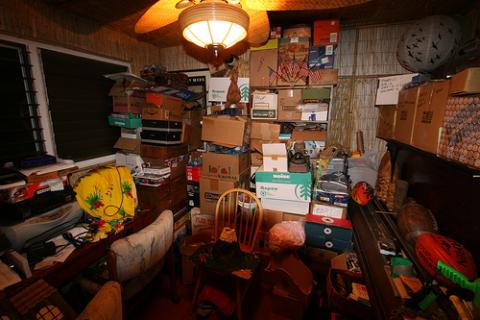When you just can't let go

The phenomenon of compulsive hoarding is not a behaviour many of us encounter very often but recognition of the disorder is increasing in Ireland, writes John Holden.
Many of us have been accused of ‘hoarding’. If you keep old magazines that you’ll probably never read again, for example, you may be accused of hoarding. Some people will keep seemingly useless objects - like a dog leash, when they don’t have a dog. The logic of the hoarder is that a dog may one day enter his or her life in the future. The expectation is that the ‘useless’ object will become ‘useful’ at some other time.
However, when hoarding gets out of control and starts to take over your living space and cause anxiety, it becomes a disorder. Leslie Shoemaker of OCD Ireland is seeing more and more cases of this behaviour. “Hoarding has always been here,” says Shoemaker. “It’s just one of those conditions that doesn’t get much recognition. In the past we’d hear about it when someone isolated died and they found piles of rubbish in their homes. But people are more aware of it as a psychological disorder now, so they can more easily identify the behaviour.”
The isolation of many hoarders is a factor which allows them to continue with the behaviour. While hoarding characteristics can be seen in people as young as 13, it is most commonly found among people in their 50s and upwards. The items hoarded range from the obsessive to the downright absurd. “Coffee cups, McDonalds wrappers taken out of bins, newspapers - it could be anything,” says Shoemaker. Some of us could sympathise with the ‘hoarder’ who keeps magazines, newspapers, flyers etc, just in case there is useful information that could be needed in the future. But collecting used McDonald wrappers is a little more difficult to understand. “There’s no rhyme or reason to what a person hoards,” says Shoemaker. “The reasons make sense to the people doing the hoarding - a significant point in terms of using cognitive behavioural therapy to treat the behaviour.”
Considered a form of obsessive compulsive disorder (OCD), it has recently been argued that hoarding should be classified in a different way. “Obsessive compulsive behaviour is characterised by two features – an obsession and a compulsion,” says Shoemaker. “An OCD sufferer might wash their hands ten times on the left and ten times on the right because a message from the brain is telling them that there are germs everywhere. The compulsion, like washing hands, is done to make the anxiety of the obsession go away. So continuous praying or counting or thinking about the same thing over and over helps to relieve an anxiety. But such compulsive behaviour is often done in a ritualistic way.
“Hoarding isn’t ritualistic like other forms of OCD,” she adds. “There is some anxiety attached to it - in extreme cases – like when your home becomes a health hazard. But there’s no rhyme or reason as to where or why hoarders leave their stuff where they do.”
Research into this condition is far more advanced in the US, where the OC Foundation notes several reasons as to why hoarders behave the way they do. They include: “difficulty organizing possessions; unusually strong positive feelings (joy, delight) when getting new items; strong negative feelings (guilt, fear, anger) when considering getting rid of items; strong beliefs that items are ‘valuable’ or ‘useful’, even when other people do not want them; feeling responsible for objects and sometimes thinking of inanimate objects as having feelings; denial of a problem even when the clutter or acquiring clearly interferes with a person’s life.”
Hoarders’ homes can be dramatic,” says Shoemaker. “Some people acquire so much stuff that they can’t even live inside their own homes. There’s no room for them. Because some hoarders might even keep rotten food, there can be serious health and safety issues. So very often people will isolate themselves so that nobody will challenge their behaviour.”
According to Shoemaker, psychologists still don’t know exactly why hoarders do what they do. In some cases, especially with older people, it has been suggested that people who lived throughout economically stressful times - or through a war - can often become hoarders afterwards for fear that lean times may one day return. But there are also examples of hoarders who have not had such life experiences.
The good news is that help is available to sufferers. “Current estimates of OCD suggest 2 to 3% of people are affected by some form of the condition,” says Shoemaker. “In the 1970s that figure was 0.5%. The number of sufferers hasn’t risen though. It’s just that more people are going for treatment now and the stigma attached to it has reduced.”
For more information see www.OCDIreland.org or www.ocfoundation.org.
Image top: puuikibeach.
